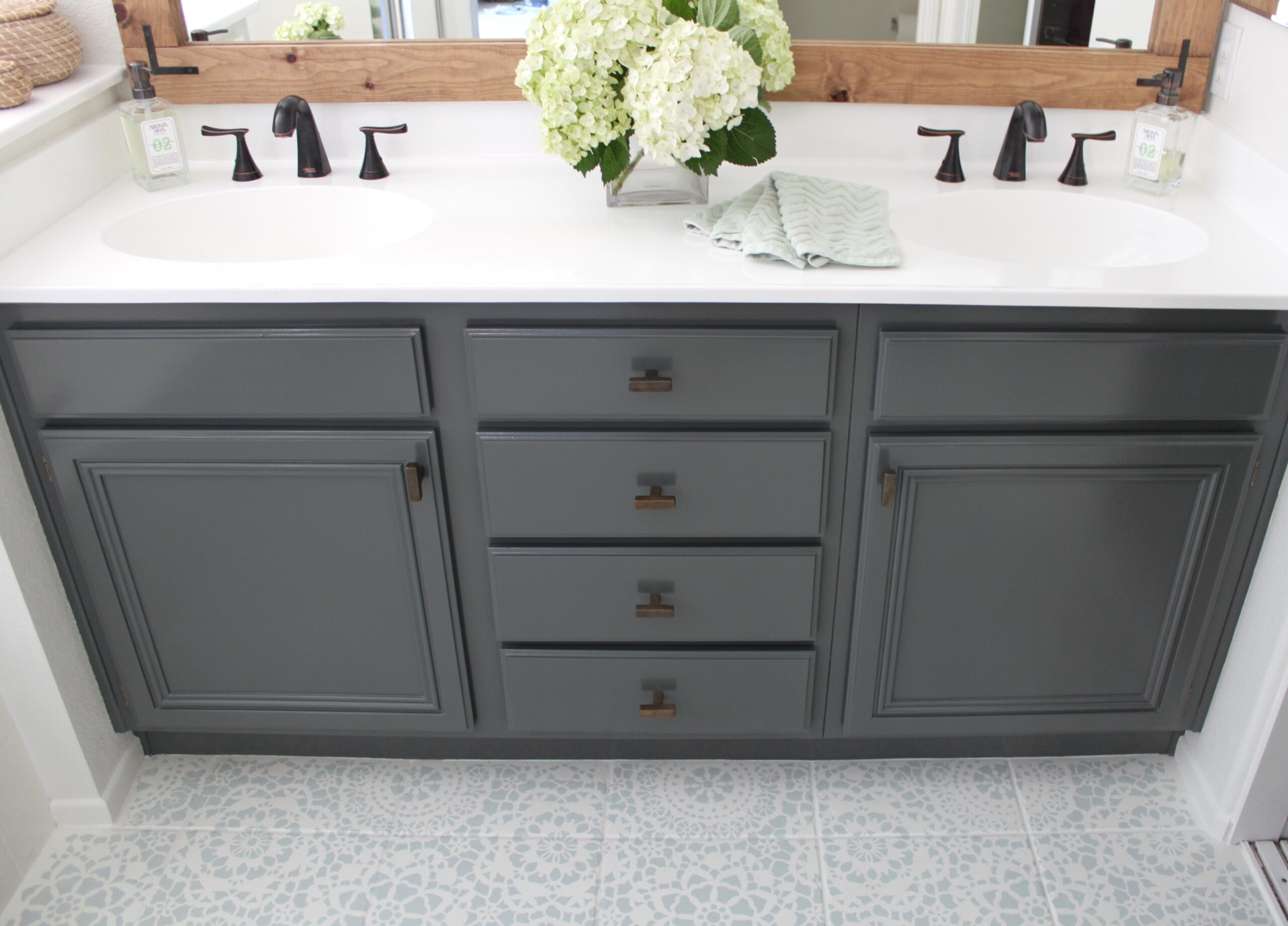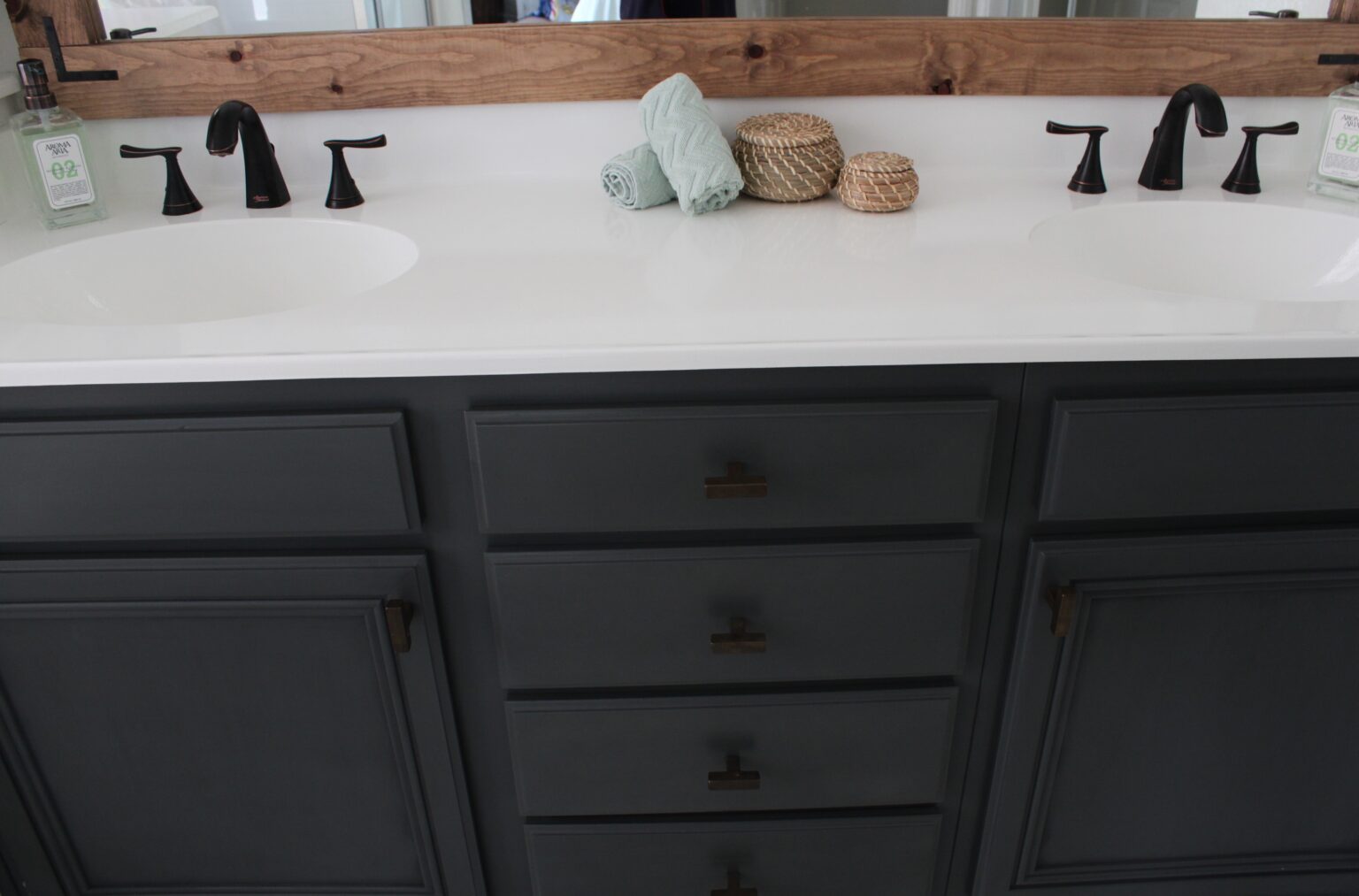Understanding Bathroom Countertop Refinishing

Refinishing a bathroom countertop is a cost-effective way to give your bathroom a fresh, updated look without the expense of replacing the entire countertop. This process involves resurfacing the existing countertop with a new layer of material, effectively concealing imperfections and blemishes while enhancing its overall appearance.
The Refinishing Process
Refinishing a bathroom countertop typically involves several steps, each contributing to the final outcome. The process can be summarized as follows:
- Preparation: The first step involves preparing the countertop surface for refinishing. This includes cleaning the surface thoroughly to remove any dirt, grease, or debris. The existing sealant is also removed to ensure proper adhesion of the new coating. Depending on the material and condition of the countertop, sanding may be required to smooth out any imperfections or uneven surfaces.
- Application: Once the surface is prepared, a new layer of coating is applied. This coating can be epoxy, acrylic, or other specialized materials designed for countertop refinishing. The coating is applied in multiple thin layers, allowing each layer to dry completely before applying the next. This ensures a smooth, even finish.
- Curing: After the final layer of coating is applied, the countertop is allowed to cure. This process involves allowing the coating to harden and solidify, typically taking several hours or even days depending on the specific product and environmental conditions.
- Finishing: Once the coating has cured, the final step involves polishing the countertop to achieve a smooth, glossy finish. This may involve using sandpaper, buffing pads, or other tools to remove any imperfections or haze from the surface.
Benefits of Refinishing
Refinishing a countertop offers several advantages over replacing it, making it an attractive option for homeowners looking for a cost-effective way to update their bathroom.
- Cost Savings: Refinishing a countertop is significantly less expensive than replacing it. This is particularly beneficial for homeowners on a budget, allowing them to achieve a new look without breaking the bank.
- Aesthetic Improvements: Refinishing can transform the look of a countertop, making it appear new and modern. This can enhance the overall aesthetic appeal of the bathroom, creating a more inviting and updated space.
- Quick Turnaround Time: Refinishing a countertop is a relatively quick process, often taking just a few days to complete. This is much faster than replacing a countertop, which can involve lengthy installation processes and potential disruptions to bathroom use.
Countertop Materials That Can Be Refinished
Refinishing is a versatile option, suitable for various countertop materials commonly found in bathrooms.
- Laminate: Laminate countertops are a popular choice for bathrooms due to their durability and affordability. They can be refinished using epoxy or acrylic coatings, effectively restoring their appearance and extending their lifespan.
- Formica: Similar to laminate, Formica countertops can also be refinished using specialized coatings. These coatings can address scratches, stains, and other imperfections, restoring the surface to a pristine condition.
- Solid Surface: Solid surface countertops, often made from materials like Corian or Wilsonart, can also be refinished. The refinishing process involves sanding down the surface and applying a new layer of resin, creating a seamless finish that hides imperfections and enhances the overall look.
Common Issues During Refinishing
While refinishing a countertop offers numerous benefits, it’s essential to be aware of potential issues that may arise during the process.
- Uneven Application: If the coating is not applied evenly, it can result in an uneven finish. This can be caused by improper preparation, inadequate mixing of the coating, or insufficient drying time between layers.
- Color Mismatch: When refinishing a countertop, it’s important to choose a coating that closely matches the existing color. If the color mismatch is significant, it can result in an undesirable aesthetic outcome.
- Chipping or Cracking: The new coating may chip or crack if the underlying countertop is damaged or if the coating is not properly applied. This can be prevented by ensuring that the surface is properly prepared and that the coating is allowed to cure completely.
Preparing for Refinishing

Refinishing a bathroom countertop is a DIY project that can save you money and give your bathroom a fresh look. However, proper preparation is crucial for a successful outcome. It ensures the refinishing product adheres well and lasts for years.
Cleaning the Countertop
Cleaning the countertop thoroughly is essential to remove dirt, grease, and grime that can interfere with the refinishing process. Start by removing all items from the countertop and cleaning the surface with a mild detergent and warm water. Rinse thoroughly and allow the countertop to dry completely. For stubborn stains, you can use a baking soda paste or a commercial cleaner specifically designed for countertops.
Sanding the Countertop, Can you refinish a bathroom countertop
Sanding the countertop is necessary to create a rough surface that will allow the refinishing product to adhere properly. Use a fine-grit sandpaper, such as 120-grit or 220-grit, and sand the entire surface in a circular motion. Be sure to sand in the direction of the countertop’s grain, if applicable. This will create a smooth and even surface for the refinishing product.
Protecting Surrounding Areas
To prevent damage to surrounding areas during the refinishing process, use painter’s tape to protect the walls, sink, and backsplash. Cover the floor with a drop cloth or plastic sheeting. You may also want to use a plastic bag or tarp to cover the sink to prevent any spills or drips from damaging it.
Materials and Tools Checklist
Here is a checklist of materials and tools you will need to prepare your bathroom countertop for refinishing:
- Mild detergent
- Warm water
- Baking soda (optional)
- Commercial countertop cleaner (optional)
- Fine-grit sandpaper (120-grit or 220-grit)
- Painter’s tape
- Drop cloth or plastic sheeting
- Plastic bag or tarp (optional)
- Gloves
- Mask
- Safety glasses
It is crucial to follow the manufacturer’s instructions for the refinishing product you choose. These instructions will provide specific guidance on preparing the countertop for the product.
Refinishing Techniques and Applications: Can You Refinish A Bathroom Countertop

Refinishing a bathroom countertop involves applying a new surface to cover the existing material, transforming its look and extending its lifespan. Several techniques, each with its own advantages and disadvantages, can be employed to achieve this transformation.
Epoxy Coatings
Epoxy coatings are a popular choice for countertop refinishing due to their durability and resistance to stains and scratches. Epoxy is a two-part resin that mixes together to form a hard, durable coating. This coating is typically applied in multiple thin layers, allowing each layer to dry thoroughly before applying the next. The application process involves carefully preparing the surface, ensuring it is clean, smooth, and free from any imperfections. The epoxy is then mixed according to the manufacturer’s instructions and applied with a roller or brush.
Specialized Paints
Specialized paints designed for countertop refinishing offer a wide range of colors and finishes. These paints are formulated to adhere well to various surfaces, including laminate, ceramic tile, and even natural stone. The application process is similar to applying regular paint, involving proper preparation of the surface, followed by applying thin coats with a brush or roller. However, specialized countertop paints often require a specific curing time before the surface can be fully used.
Comparison of Refinishing Products
| Refinishing Technique | Pros | Cons |
|---|---|---|
| Epoxy Coatings | High durability, resistant to stains and scratches, can be applied to various surfaces | Requires careful application, can be difficult to remove if applied incorrectly, may not be suitable for all countertop materials |
| Specialized Paints | Wide range of colors and finishes, relatively easy to apply, cost-effective | May not be as durable as epoxy coatings, can be susceptible to scratches and stains, limited color options |
Application Process
The application process for countertop refinishing techniques varies depending on the chosen method.
Epoxy Coatings:
- Clean the surface thoroughly using a degreaser and allow it to dry completely.
- Sand the surface to create a smooth, even finish.
- Apply a primer specifically designed for epoxy coatings to enhance adhesion.
- Mix the epoxy resin and hardener according to the manufacturer’s instructions.
- Apply the epoxy in thin layers, ensuring even coverage.
- Allow each layer to dry completely before applying the next.
- Apply a sealant to protect the epoxy coating from scratches and stains.
Specialized Paints:
- Clean the surface thoroughly using a degreaser and allow it to dry completely.
- Sand the surface to create a smooth, even finish.
- Apply a primer specifically designed for countertop paints to enhance adhesion.
- Apply the paint in thin layers, ensuring even coverage.
- Allow each layer to dry completely before applying the next.
- Apply a sealant to protect the paint from scratches and stains.
